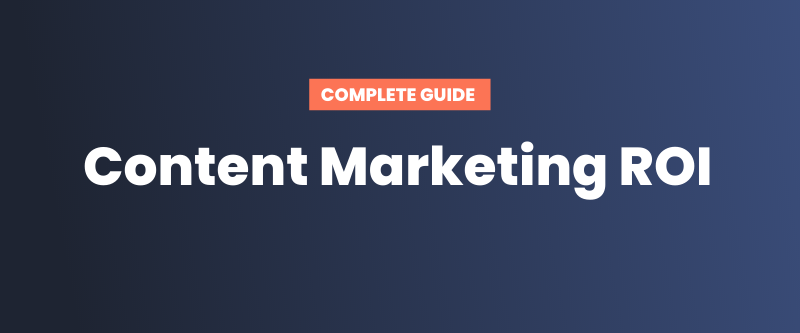Content marketing is an essential part of digital marketing, but few understand what it truly means. There’s plenty of information out there, but it’s often higher level and filled with jargon, because it’s not directed to businesses, but marketers. I guess that doesn’t make them very good at content marketing.
A proper content marketing campaign can be complex, but it’s only through understanding what it is and how it benefits your business that can you get a healthy grasp of the concept and use it for your company. Content marketing is far more than writing a great blog post.
What is Content Marketing?
The goal of content marketing is to spread the word about your business and to build relationships through great content that people want to read. It’s multifaceted and incorporates other avenues of marketing, including email, social and SEO, but not directly. They work together to create a cohesive marketing plan. According to Forbes, 88 percent of business 2 business marketers use content marketing, but only 32 percent have an actual strategy.
It all starts with great content. What types of content? These include blogs, articles, press releases and anything else that can provide authoritative, educational and informative content to your target audience. A well-crafted marketing campaign naturally leads to increased sales, a better return on investment than other marketing channels and loyal customers that trust your brand.
Traditional online advertising isn’t working. According to the Content Marketing Institute, more than 200 million people use ad blockers on their browsers. If ads aren’t showing up, they’re not effective, but content is always seen.
What Content Marketing Isn’t
Content marketing isn’t SEO or link building. Will good content help with both of these areas? Yes, but that should not be the point. When you focus more on SEO and link building than creating excellent content, you end up shooting yourself in the foot.
Content marketing should focus on creating great and shareable content. Creating content focusing on SEO and link building is fine to do, but it shouldn’t be used for content marketing. It’s important that your business separates these areas from content marketing and treat it as a unique entity.
Content marketing also isn’t about a sales call. Don’t try and sell your products and services directly in content marketing materials. People don’t want to read a 500- or 1000-word article about your President’s Day sale. You’re not informing or educating them. You’re bombarding them with a long-form sales flier. Instead of building a relationship, you might wind up boring or alienating your customers.
What Makes “Good” Content?
You know what the goal of content marketing is, but now you need to understand what makes “good” content. As the owner or employee of a business, you have knowledge above and beyond what your target audience may have. It’s time to share that information with the masses.
Who is Your Audience?
The tone of your content will change depending on who your target audience is. For example, a business to business company may include a more technical and professional approach, but something targeted to the general public can be simpler and more relaxed. It also helps to guide what type of content you create. Businesses might enjoy an in-depth white paper that provides very specific and technical information, but the general public would do better with a blog post.
Be Creative
The content you create, no matter what form it comes in, must have value for the target audience. It also has to be shareable and something people want to read. You have to be creative. Use the specialized knowledge that you have to create something few people have seen before. You know what your competition is doing and sharing, so don’t do the exact same thing. Try to take the information and put a new angle on it. While it’s fine to share information that is timely, try to also sprinkle in evergreen content that doesn’t have a shelf life. This way, the content is always worth sharing and reading no matter when your customers see it. Good evergreen content can provide a great return on investment years after being posted. According to HubSpot, 1 in 10 blog posts increase organic traffic to a website over time.
Being creative also goes with what types of content you share. Don’t provide the same content all the time. Shake it up a bit. One month, write a blog, and the next, create a great infographic.
Publishing and Distributing Content
The key aspects of content marketing are the publishing and distribution of content through several different avenues. It’s not about throwing out content willy nilly, but a targeted and systematic approach designed to develop and grow relationships with potential and existing customers.
Blogs
Blogs are the bread and butter of content marketing. They’re located on your site, so you’re building your brand, depending on the CMS platform, look amazing filled with pictures, quotes, etc. You control the narrative, unlike newspaper and online articles written by others. It’s also a natural funnel for sales as they are already on your site, so they’ll be more likely to explore. Blogs are also designed to be shared via social media and email marketing.
White Papers
There are few forms of content that prove to potential customers that you are on the cutting edge of your industry more than a white paper or case study. A white paper is a long-form report or guide that provides insight on a complex matter of interest to the reader. It’s often very technical, and the goal is to help the reader understand a complex concept, solve a problem or make a decision. The most common way to distribute this content is through a download on your website, and it can also be linked to relevant social media, such as the business oriented LinkedIn.
Fact Sheets
Fact sheets are single sheets usually bulleted and designed to provide quick snippets and statistics to people for quick and easy mental ingestion. The bullets are short, a sentence or two long, and can be placed on your website, or shared on social media, such as Facebook and Pinterest. They can even be printed and handed out at conferences and business outings. Unlike many of the other forms of content, fact sheets are quick to put together and sent to your graphics person to make it look amazing.
Social Media
We’ve talked about how social media can be used in distribution, but it’s also a form of content marketing itself. Fun and informative posts, tweets and pictures can go viral just as easily, if not easier, than other forms of content. Your posts are shared and liked by your existing fan base, but can be extended further through paid sponsored posts and tweets. This will help gain new likes and shares as well as drive website traffic organically. It’s also a valuable way to build relationships and trust by responding to people that comment on your posts. If an influencer in your industry shares a post, then it can lead to significant short term growth.
Guest Posting
Guest posting is when you create content for another venue, such as a blog, newspaper or online publication. Guest posting helps bring your content and business to an audience you may not have had access to prior. You don’t have to go for major tier one publications, such as The New York Times, either. Trade magazines and websites, local newspapers, etc. can bring people to your site as well. Do not do guest posting for links as most blogs, etc. will stipulate that they be no-follow links, which are links that Google will not count as backlinks.
Email Marketing
Email newsletters have been a marketing tool for decades, but in the age of content marketing they have taken on a new vigor. A good newsletter design filled with informative no-sales oriented content is a great way to retain existing customers and build brand ambassadors. It keeps your business fresh in their minds, and further interests them in your products or services.
Press Releases
Press releases have been around long before the Internet and were originally faxed and mailed to news organizations. There are few free ways to get widespread exposure, but the media has a far reach. A press release should be news oriented and not informal like a blog post. They tend to follow a format and contain quotes. The primary methods of distribution are direct email and PR distribution services. Direct emails to specific media outlets or journalists should contain an eye-catching subject line and be personal. PR distribution services load the release onto their sites and send it out to appropriate media. If you need a fast response or a larger or more targets distribution, then it will cost you money.
Infographics
Infographics are a great way to boil down information in a fun and entertaining way. Infographics are eye-catching and very popular when distributed via social media, such as Pinterest and Instagram. When you take extra time to create an infographic that looks good and is informative, you’ll be surprised how fast it will be shared both in social media and through other websites. Make sure they provide proper attribution when any pictures, information or infographics are used on a website or print publication.
Videos
While we’ve focused mostly on written content, video is also considered content. How-tos, informational and even funny cat videos can be shared on Facebook, placed on your website, YouTube and other websites. The videos should be informational and entertaining if applicable. If you are using a video as a content marketing tool, then make sure the video is quality, not just in content, but production. If you want it to go viral or be shareable, then make sure you have good lighting, sound and video.Repurpose Existing Content
Your brain is probably spinning now, thinking about how to create all these pieces of content on a regular basis. The good news is one incredibly exceptional piece of content can be repurposed for a variety of content sources. An amazing white paper can take months to create, but once done, you can break up the important points into blog posts. Turn them into infographics and social media posts. Create videos pertaining to the information. All that matters is that the content is unique and not lifted directly from the paper. It doesn’t have to be something as complex as a white paper either. Break a blog post down into a few bullet points, and, over a period of time, put those on social media.
You don’t have to constantly be creating new and unique content for each content niche. It’s perfectly acceptable and encouraged to spread the information to different content sources. You’re increasing your return on investment and bringing in audiences that wouldn’t naturally get with the single piece of content.
Benefits on Content Marketing
When your content marketing strategy is in full force, it naturally brings people to your site and increases sales. By distributing good content on social media sites, it will be shared, liked and your fans or followers will grow. People will want to see what you’re producing.
Websites that enjoy your work will attribute your website when they use information, creating backlinks. Existing and potential customers will trust your business, because the content shows you’re an expert and potentially an influencer in your niche. They’ll share your content and become brand ambassadors for your company. Press releases can garner major stories, and some websites will just publish your press release as is if it’s created properly.
Content marketing improves brand recognition and develops relationships with customers, journalists and peers in your industry.
Content marketing isn’t a new concept, but it’s only now being appreciated for its true worth in digital marketing. If you don’t have a content marketing plan and back it up with good authoritative content, then you’re missing on increased traffic, sales and consumer trust. It’s not enough to create content, you need to have a plan with goals.





